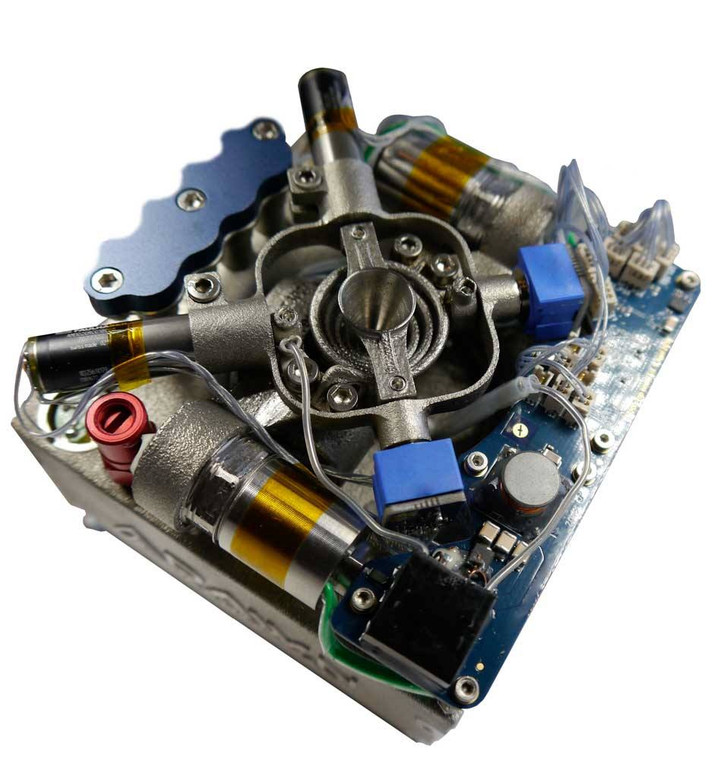Launched on SpaceX’s Falcon9, Arianespace’s Vega and Roscomos’ Soyuz-2 rideshare missions, Dawn’s ECSS qualified, CubeSat Propulsion Modules provide high thrust and high efficiency to get your CubeSat to where it needs to be.
Using non-toxic propellants in a self-pressurizing configuration, these points are unique to Dawn’s green chemical propulsion architecture and enable increased satellite capabilities compared to hydrazine, LMP-103S (ADN), AF-M315E (HAN) or other proprietary fuel-blend systems:
- Self-pressurizing propellants: No helium pressurisation systems required. This enables simple, lightweight and low-cost feed system and tank designs. Stable pressure throughout the satellite’s life ensures constant thrust and Isp of >285 s.
- Commonly available propellants: They can be sourced from local industrial gas suppliers and are not subject to export control restrictions. They are REACH compliant and ITAR free.
- Electric based ignition: No preheating of catalysts results in significant power savings. It also means thrusters are rapidly cold-start capable, with unlimited cold-start capability.
- Thrusters fire in both ambient and vacuum environments: Combined with non-toxic propellants, this allows for simple satellite integration and highly representative hardware testing at system level with live or simulated propellants without the need for specialised testing environments.
- Thrusters operate in both hot and cold-gas modes: This means the same thruster can perform both high-performance burns and fine impulse manoeuvres.
- Low power draw: with an average firing power of 12.5W per thruster while firing.
- 6 DOF capable: through a fully integrated RCS system.
Dawn can deliver complete turn-key propulsion systems, complete with thrusters, propellant tanks, feed system and thruster control electronics. A full-service partner, Dawn provides support in hardware, logistics, systems integration, propellant sourcing and onsite fueling.
| Size | Total Impulse | Dry Mass | Wet Mass |
| 0.7U | >425 N.s | 1000 g | 1170 g |
| 1U | >850 N.s | 1100 g | 1410 g |
| 1.5 U | >1,800 N.s | 1500 g | 2250 g |
| Parameter | Value |
|---|---|
| Type | Propulsion |
| Lead Time | 6 months |
| Thrust Range | 0.33 N to 1 N (temperature dependant) |
| Regulatory | ITAR free and REACH compliant |
| Propellant Type | Nitrous oxide (N2O) and propene (C3H6) |
| Specific Impulse | >285 s |
| . | Cold-start capable. No preheating catalysts |
| Operating Temperature Range | 0°C to 30°C |
| . | No propellant degradation over time |
| Nominal Power Consumption | 12.5 W |
| Minimum Impulse Bit | 35 mN.s |
| Minimum impulse bit, cold-gas | <20 mN.s using N2O; <2 mN.s using C3H6 |
| Thrust Vector Control | 2-axis |
| Delta-v | >230 m/s (for typical 3U CubeSat) |
| . | No thruster degradation over time |
| Flow Rate | Oxidizer at 170 mg/s; Fuel at 18 mg/s |
| Proof Pressure | Oxidizer at 110 bar; Fuel at 40 bar |
| Burst Pressure | Oxidizer at >150 bar; Fuel at >55 bar |



